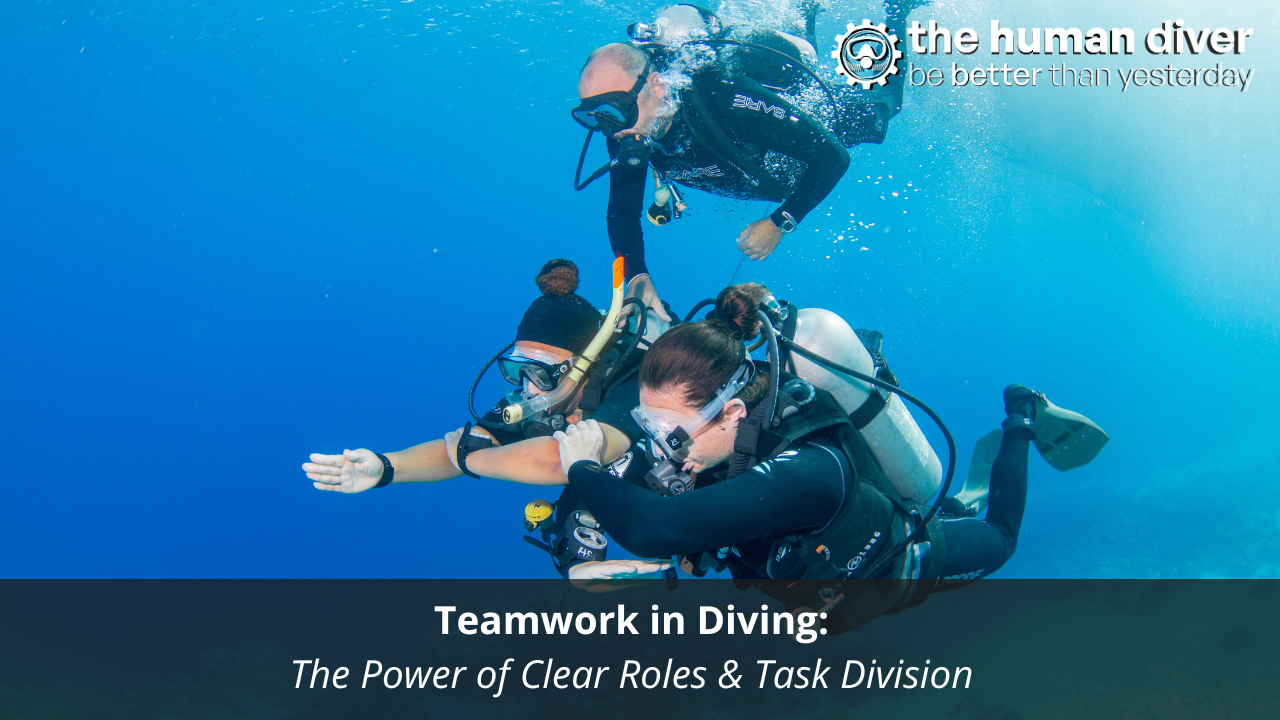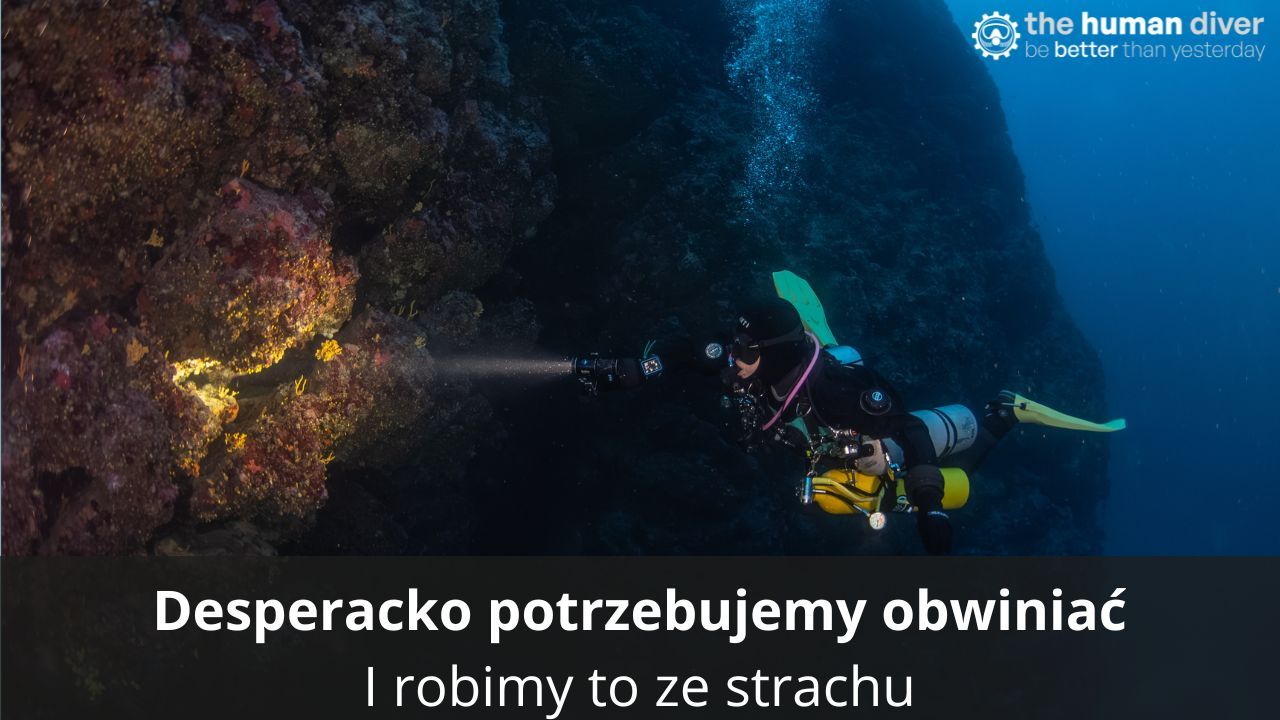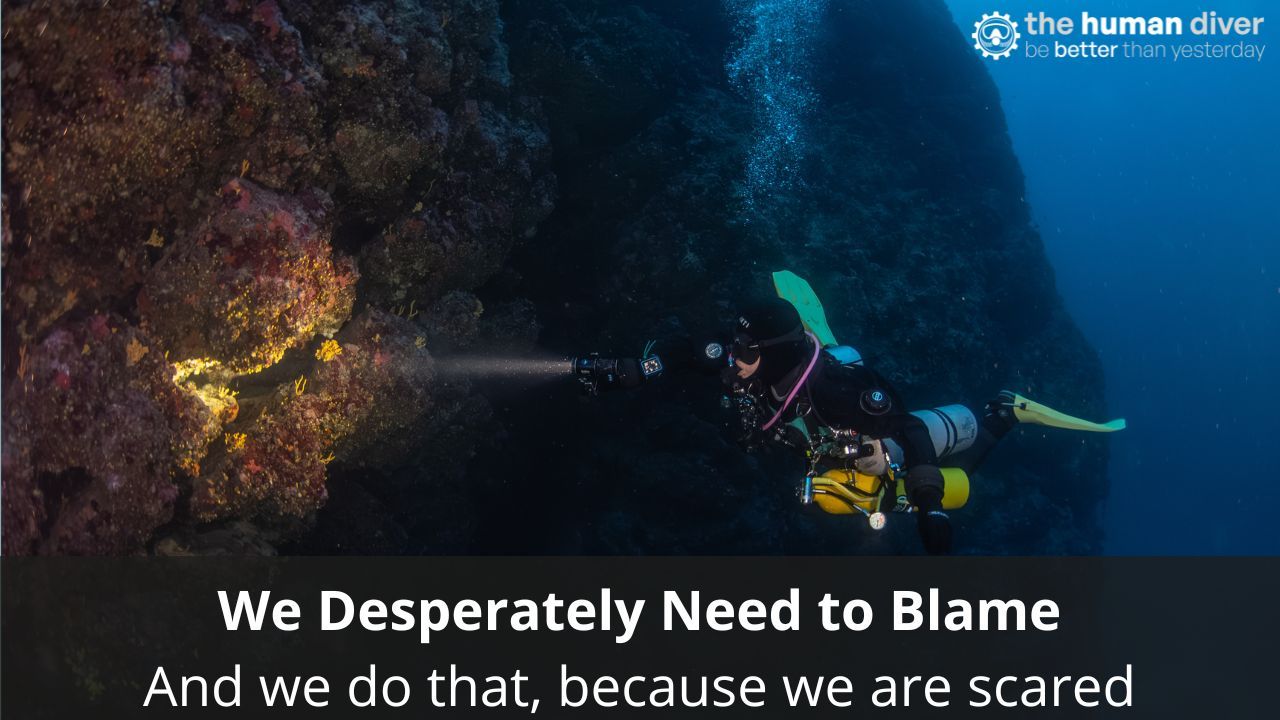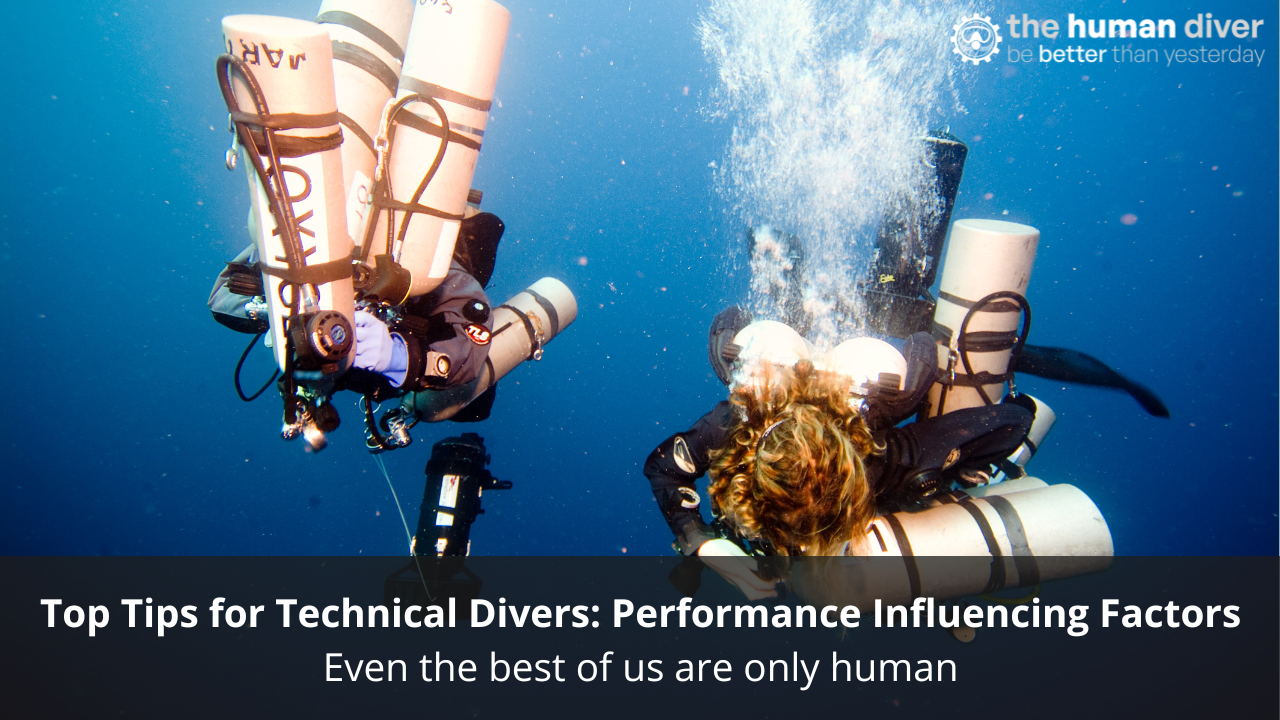
Reframing The Dirty Dozen - Part 3
Jun 11, 2025In parts one and two of this blog, we explored six of the "Dirty Dozen" human factors that contribute to errors and incidents in diving: lack of communication, distractions, lack of resources, stress, complacency and lack of teamwork. These factors, originally developed by Gordon Dupont, offer a framework for identifying and mitigating risks in diving. Human factors are universal, and their application to diving, both recreational, technical and professional, is crucial for safety and performance.
We’re reframing this list to look at the context involved, the systems and procedures that affect human behaviour and performance in ways that need to be considered, rather than focusing only on the human involved.
In this third installment, we’ll look at three more of the remaining six factors: pressure, lack of awareness and lack of knowledge. As you read, consider how these factors manifest in your diving activities and what steps you can take to address them, as well as what changes may need to be made to the system that you’re working in.
Pressure

Pressure refers to external or internal forces that compel divers to act against their better judgment. This could stem from financial or time constraints, peer expectations, or personal goals. Imagine a diver feeling pressured to proceed with a dive despite unfavorable conditions because they don’t want to disappoint their group. Or an instructor rushing through a lesson to adhere to a tight schedule. Pressure often leads to rushed decisions, overlooked safety checks, and increased risk-taking. It can compromise both individual and group safety.
Countermeasures: The two ways of dealing with pressure are by acknowledging and reducing it. Fostering a culture where safety takes precedence over schedules or social expectations will help to mitigate the pressure but is easier said than done. Encouraging divers to feel comfortable prioritizing their well-being helps; the golden rule of “anyone can thumb the dive at any time for any reason” should be emphasised, even more so when obvious pressure is felt. Again, dive planning and briefings help to set the tone; by explicitly addressing individual limits, concerns, and dive conditions, the team can collectively set realistic expectations and reduce potential pressures. Finally, recognizing and managing self-imposed pressure is equally important. Sunk-cost fallacy is a common pressure among divers, we need to recognise when it occurs (particularly on “trip of a lifetime” type events). Having a strong team around who recognise that you’re in the grip of it can help if they’re willing to speak out and you’re able to stop before something goes wrong. It’s also worth remembering that taking a step back or speaking up is a sign of strength and responsibility, not weakness.
Time and money pressures are two of the biggest drivers when it comes to people’s behaviour. It takes a strong-willed individual to resist them; changing the culture will have a greater effect.
Lack of Awareness

Lack of awareness refers to a reduced ability to perceive and interpret what is happening around you. It encompasses situational awareness—being aware of your environment, equipment, and team—as well as the potential consequences of your actions. A diver who becomes overly focused on taking underwater photos may lose track of their depth or air supply. Similarly, a lack of awareness can occur when divers fail to notice changes in currents, weather conditions, or their buddy’s behavior. Reduced awareness increases the likelihood of overlooking early warning signs of danger. This can escalate small issues into significant problems, potentially endangering the diver and their team.
Countermeasures: Distractions pull our awareness away from important things, so ensuring our skills are of a level where we can complete processes automatically helps free up our capacity to be able to pick up clues and cues about other potential issues. If someone is having to focus on controlling their buoyancy, or on taking photos, or on doing a gas switch they reduce their extent at which they are likely to notice other things from happening. The same goes for emergency procedures, the “easier” they are for us to conduct, the more capacity we have. When students have been rushed through courses, they have not had the time and experience to build these skills to a point where they are automatic. Team members can be assigned to focus on different aspects of a dive, which shares the work and leaves each individual with greater capacity. Actively and consciously scanning our self, equipment, buddies and environment helps us to pick up on any cues/clues that might occur.
Lack of Knowledge

Lack of knowledge is the absence of essential information, skills, or understanding required for safe diving. It’s not just about what you don’t know—it’s also about not realizing what you don’t know. A diver unfamiliar with the specifics of a new dive site may misjudge currents or entry points. Similarly, a lack of training on a particular piece of equipment, like a dry suit or dive computer, can lead to errors during use. Knowledge gaps increase the likelihood of mistakes and reduce a diver’s ability to respond effectively to challenges. In emergencies, lack of knowledge can be critical.
Countermeasures: People who are new to a topic, skills or environment are unlikely to know what they don’t know. Identifying gaps in knowledge can be done as a team by using open questions (tell me…. explain to me….. describe to me….. Show me….). Briefings are an easy way to pass on knowledge about specific dive sites. Ongoing education doesn’t have to mean taking course after course, workshops and mentorship are a great way to address knowledge gaps. More experienced divers can share advice, and help newer divers to practice new skills in controlled environments. As individuals we can be curious, find out why things are done a certain way, or why certain skills are done. Understanding the “why” behind rules helps us build our knowledge and be able to apply in other situations.

Jenny is a full-time technical diving instructor and safety diver. Prior to diving, she worked in outdoor education for 10 years teaching rock climbing, white water kayaking and canoeing, sailing, skiing, caving and cycling, among other sports. Her interest in team development started with outdoor education, using it as a tool to help people learn more about communication, planning and teamwork.
Since 2009 she has lived in Dahab, Egypt teaching SCUBA diving. She is now a technical instructor trainer for TDI, advanced trimix instructor, advanced mixed gas CCR diver and helitrox CCR instructor.
Jenny has supported a number of deep dives as part of H2O divers dive team and works as a dive supervisor and safety diver in the media industry.
If you'd like to deepen your diving experience, consider the first step in developing your knowledge and awareness by taking the Essentials of HF for Divers here website. If you're curious and want to get the weekly newsletter, you can sign up here and select 'Newsletter' from the options.
Want to learn more about this article or have questions? Contact us.










